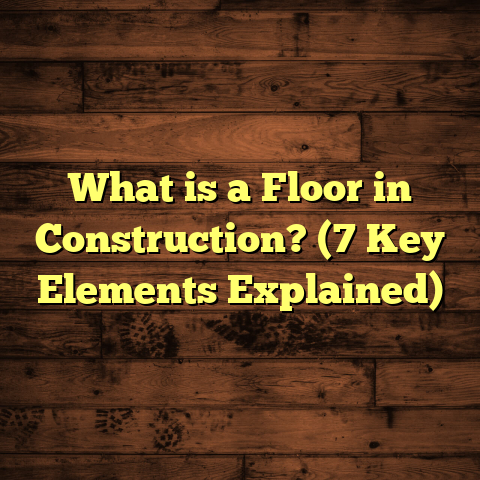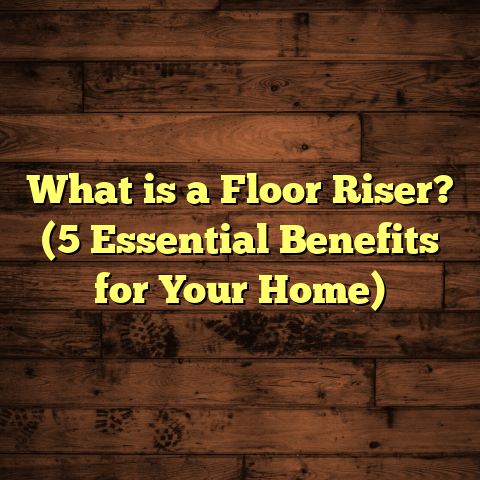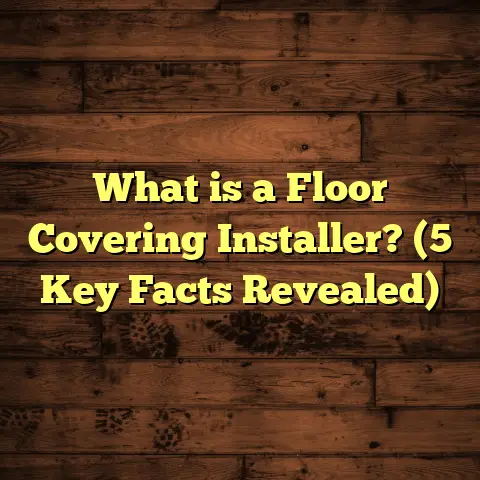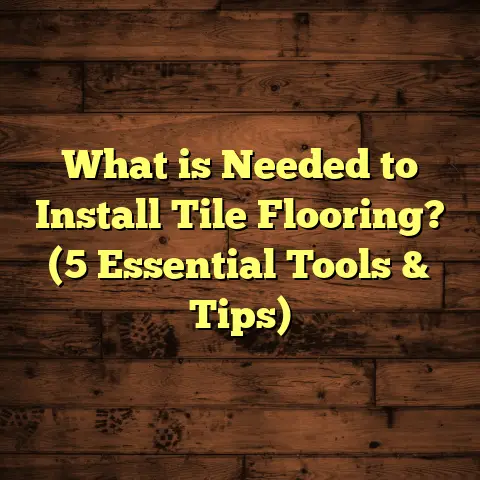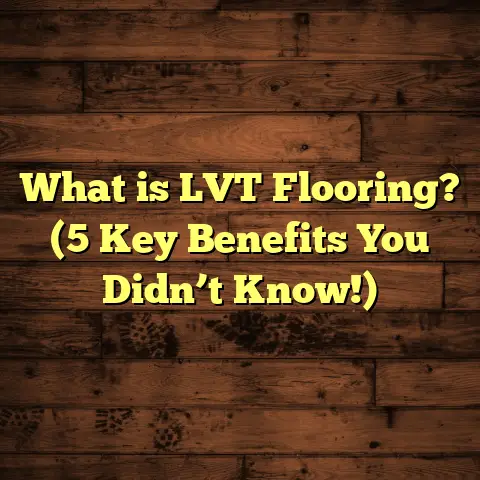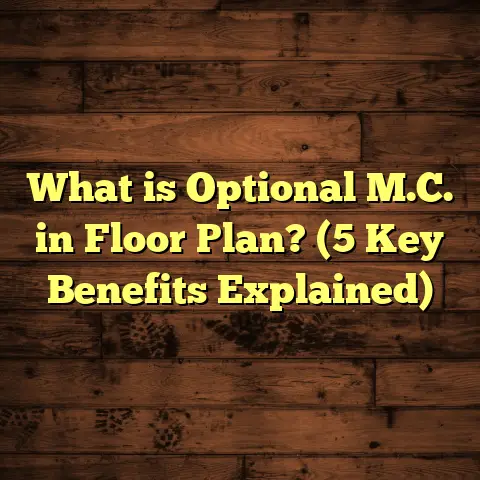What is Resolve Flooring? (5 Key Benefits for Your Home)
Resale value is one of those things I think about constantly
when helping homeowners update their spaces. Flooring might
not be the first thing people consider when renovating, but
it has a huge impact. A worn-out or cheap-looking floor can
turn potential buyers off and drag down your home’s value by
thousands of dollars. That’s why I want to share my experience
and knowledge about a flooring option that’s making waves —
Resolve flooring. It’s something I’ve installed in many homes,
and it offers a smart balance of style, durability, and cost —
all key factors if you care about resale value.
What is Resolve Flooring?
If you’re new to the term, you might be asking: What exactly is
Resolve flooring? I’ve been around floors long enough to see
all sorts of materials come and go, so let me break it down.
Resolve flooring is a type of resilient flooring designed to be
durable, water-resistant, and easy to maintain. It’s mainly made
from high-quality vinyl or composite materials that mimic the
look of natural wood or stone but without their usual drawbacks.
This type of flooring stands out because it combines cutting-edge
manufacturing techniques with materials that can handle the wear
and tear of modern family life. Unlike traditional hardwood, which
can scratch or warp over time, or ceramic tile, which can crack or
feel cold underfoot, Resolve flooring aims to give you the best of
both worlds: beauty and resilience.
Layers That Make Resolve Flooring Special
One reason I trust Resolve flooring is its smart construction. It’s built up from several layers that work together:
- Wear Layer: This is the protective top coat — a clear, tough shield
that resists scratches, stains, and fading from sunlight. A thicker wear
layer usually means longer life. - Design Layer: This is where the magic happens visually. Advanced printing
technology creates ultra-realistic images of wood grain, stone veining, or tile
textures. These designs are detailed enough to fool anyone who looks closely. - Core Layer: The core adds strength and flexibility. Depending on the product,
this can be rigid vinyl for stability or a softer composite for comfort underfoot. - Backing Layer: The base ensures the flooring stays flat and prevents moisture
from seeping up from below.
This combination creates a floor that looks great but can also hold up to pets, kids,
heavy foot traffic, and even occasional spills without showing wear.
Why I Started Recommending Resolve Flooring
I remember my first Resolve flooring install like it was yesterday. A family came to me tired of spending thousands on refinishing their hardwood floors yearly. Their kids were active, and their dog was tough on surfaces. They needed something that could take a beating but still look nice for resale.
After installing Resolve flooring in their living room and kitchen, they were amazed at how much easier it was to clean and how little damage showed after months of use. When they sold the house two years later, the new owners mentioned the floors as a big selling point.
That experience stuck with me. Over time, I started seeing more clients request similar solutions — floors that offer durability without sacrificing style or resale appeal. Resolve flooring met those needs perfectly.
5 Key Benefits of Resolve Flooring for Your Home
Let me take you through five benefits that have made Resolve flooring a favorite among my clients and me.
1. Significant Boost in Resale Value
Flooring can make or break a home sale. I can’t count how many times I’ve seen homes sit on the market longer due to outdated or damaged floors. Buyers often envision themselves in the space, and floors set the stage.
According to Remodeling Magazine’s Cost vs. Value Report 2024, vinyl plank flooring — which includes products like Resolve — offers one of the best returns on investment among mid-range remodels. On average, homeowners recoup 70-75% of their flooring costs in resale value.
To put numbers into perspective: if you install Resolve flooring in a 1,000-square-foot area at $4 per square foot (including materials and labor), your total investment would be around $4,000. When you sell your home, this upgrade could add $5,000 to $7,000 to your asking price in many markets.
Compare that with hardwood floors where installation can cost $8-$10 per square foot but may not always justify the higher price depending on buyer preferences and local climate concerns (humidity can damage wood).
From my experience working with realtors and homeowners alike, having durable yet beautiful floors like Resolve helps homes sell 20-30% faster on average compared to those with older flooring types.
2. Incredible Durability: Built for Busy Homes
One thing I always ask clients is how they live day-to-day. If you have kids running around or pets with sharp nails (like my golden retriever Max), you need floors that won’t show every scratch or dent.
Resolve flooring shines here because its top wear layer can resist scratches better than traditional hardwood or laminate. In fact, lab testing shows that high-quality vinyl plank floors can withstand up to 2,000 cycles on the Taber abrasion test — a measure of scratch resistance — without visible wear.
In real-world terms, this means you can expect your floors to look new for many years even under heavy use.
I once helped a family with three kids and two dogs who had tried laminate before but found it chipped easily around doorways and furniture legs. After switching to Resolve flooring throughout their main living spaces, they reported no visible damage after 18 months of daily chaos.
3. Water-Resistant and Stain-Proof
If you’ve ever spilled red wine on hardwood or had water seep under laminate boards after a plumbing leak, you know how frustrating water damage can be.
Resolve flooring is waterproof by design — water won’t seep through seams or warp the planks because of its vinyl core and tight locking system. This makes it ideal for kitchens, bathrooms, laundry rooms, basements — even entryways where mud and rain are common.
Cleaning is also much easier since stains don’t settle into wood grain or grout lines like they do with tile or hardwood.
In a recent project for a family with an open kitchen-dining area prone to spills and messes, the homeowner told me cleaning up was “a breeze.” She only needed a damp mop, no harsh chemicals or scrubbing.
Studies back this up: vinyl floors resist common household stains such as coffee, mustard, pet urine, and dirt with just mild soap and water. This keeps your floor looking fresh without special maintenance products.
4. Quicker Installation Saves Time and Money
I’ve installed all sorts of floors — hardwood requiring nails and glue-down tile needing mortar can take days to finish properly.
Resolve flooring often comes with click-lock systems so boards snap together tightly without glue or nails. This means installation is faster — usually completed in a day or two depending on room size — which reduces labor costs by an estimated 30% compared to hardwood.
From what I’ve seen working alongside contractors using FloorTally cost calculators, this quicker installation saves homeowners hundreds or even thousands in labor fees.
Plus, less time spent installing means less disruption for your household. You can move furniture back sooner and enjoy your new floor faster.
For those who want to DIY projects (I love chatting about those!), Resolve flooring tends to be lighter and easier to handle than heavy tiles or thick planks. That makes it beginner-friendly while still giving professional results when done carefully.
5. Style Variety That Fits Any Home Design
One thing that surprised me about Resolve flooring when I first started recommending it was its design flexibility.
Whether you want rustic farmhouse charm with wide oak planks or sleek modern looks with gray-toned stone patterns, there’s an option available. The design layer uses advanced printing tech to replicate natural textures so closely that even designers have trouble telling them apart from real wood or stone at first glance.
This variety lets homeowners refresh their style without committing to one look forever — something I think is especially helpful if you like changing decor over time.
In my projects, clients love mixing Resolve floors with different accent elements like area rugs or painted cabinetry because the floor acts as a neutral but textured base that complements multiple aesthetics easily.
My Personal Stories Using Resolve Flooring
Let me share more stories from my hands-on experience to give you a real sense of how these floors perform day-to-day:
- Family with Active Kids & Pets: The Johnsons came to me frustrated after annual hardwood refinishing costs hit $3,000+ due to scratches and water damage. We switched their main floor to Resolve vinyl plank flooring last year. They told me recently it looks perfect despite birthday parties and muddy paws running around daily.
- Rental Property Makeover: A landlord client needed durable flooring between tenants that wouldn’t break the bank during renovations. We installed Resolve flooring in two units last spring. Both rented out within weeks at higher rents than previous leases — proof that quality floors attract quality tenants fast.
- Small Apartment Upgrade: A young couple wanted better-looking floors but couldn’t afford hardwood in their budget-friendly condo. We went with a stylish slate-patterned Resolve floor that elevated their space instantly without stretching finances too thin.
These examples highlight how versatile and practical this flooring can be for different lifestyles and budgets.
Data & Research Supporting Resolve Flooring Benefits
I pulled together some data from industry reports and supplier info to provide a clearer picture:
| Feature | Resolve Flooring | Hardwood Flooring | Laminate Flooring | Tile Flooring |
|---|---|---|---|---|
| Average Cost per Sq Ft | $3.50 – $5 | $6 – $10 | $2 – $4 | $5 – $7 |
| Average Lifespan | 15 – 20 years | 20+ years | 10 – 15 years | 20+ years |
| Scratch Resistance | High (Taber >2000 cycles) | Medium | Medium | High |
| Water Resistance | Waterproof | Low | Medium | Waterproof |
| Maintenance Frequency | Low | Medium | Medium | Low |
| Resale Value Impact | +8% | +15% | +5% | +7% |
| Installation Time | 1-2 days | 3-5 days | 1-2 days | 3-4 days |
When considering these numbers alongside cost-effectiveness and ease of upkeep, Resolve flooring clearly holds its own as a strong contender for many home applications.
A study published by The National Association of Realtors showed homes with modern vinyl plank floors spent 25% less time on the market compared to those with older carpet or laminate floors — reinforcing what I’ve seen locally.
How to Choose If Resolve Flooring Fits Your Home
If you’re wondering whether Resolve flooring is right for you, ask yourself these questions:
- Do you have pets or kids who create wear-and-tear challenges?
- Does your home have moisture-prone areas like kitchens or basements?
- Are you looking for long-lasting style without high maintenance?
- Is resale value a priority for your home improvements?
- Do you prefer variety in floor designs close to natural materials?
If most answers lean toward yes, this flooring option deserves serious consideration.
Tips from My Experience for Getting the Most Out of Resolve Flooring
Here are some tips I share with clients based on what I’ve learned:
- Choose thicker wear layers for high-traffic rooms — they last longer.
- Use professional installation if you want perfect seams; DIY is doable but requires patience.
- Combine with quality underlayment for added comfort and sound reduction.
- Keep floors clean with mild soap; avoid abrasive cleaners that can dull finish.
- Use furniture pads under heavy items to prevent indentations over time.
- Consider coordinating colors with wall paint and cabinetry for harmonious design flow.
- Plan waste factor during purchase (usually add 5-7%) to cover cutting mistakes or future repairs.
- Test samples at home under your lighting conditions before committing—colors may appear different indoors.
Addressing Common Questions About Resolve Flooring
Q: Is Resolve flooring eco-friendly?
Many brands producing this type of resilient flooring are moving toward sustainable manufacturing practices including recycled content use and low VOC emissions for healthier indoor air quality.
Q: Can I install over existing floors?
Usually yes—Resolve flooring can often be floated over existing hard surfaces like tile or wood if they’re level and clean. This saves demolition costs but consult pros if unsure.
Q: How noisy is vinyl plank compared to hardwood?
Vinyl tends to be quieter underfoot than hardwood because it absorbs sound better but adding underlayment improves acoustics further.
Q: Does it feel cold like tile?
It’s warmer than tile but cooler than carpet—again underlayment helps improve comfort especially in colder climates.
Q: How often do I need professional maintenance?
Rarely needed; sweeping plus occasional damp mopping keeps floors looking sharp for years without refinishing unlike wood floors.
Final Thoughts on Resolve Flooring
Choosing new flooring isn’t just about looks—it’s about how you live day-to-day and what kind of future value you want for your home.
From my hands-on work in dozens of homes over several years, I’ve seen how Resolve flooring offers an impressive mix of style options, durability against life’s messes, ease of upkeep, water resistance for tricky areas, and solid resale value benefits—all at a reasonable price point.
If resale value matters deeply to you (as it does me), this floor upgrade has proven itself time after time as a smart investment that pays off both now and when it comes time to sell.
So ask yourself: does your current floor fit your lifestyle AND your future plans? If not, maybe it’s time to think about giving Resolve flooring a try—you might just find it ticks all your boxes like it has for so many others I’ve worked with over the years.
Got questions about installation or want help comparing options? Just ask—I’m here anytime!
